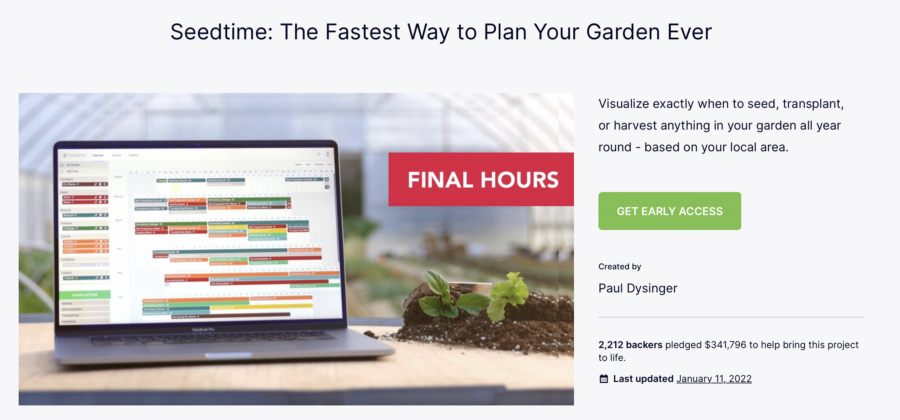App monetization guide: Top strategies to make your app profitable
Mobile apps are essential to day-to-day living. From gaming and banking to social networking and fitness tracking, they have become indispensable tools for everything.
This is why designing a mobile application goes beyond the simple idea of combining great user experience with killer features. These days, launching an app is all about bringing in revenue. It is sufficient to look at the recent mobile app market numbers:
- The mobile app market worldwide was estimated to be worth $228.98 billion in 2023
- Between 2024 and 2030, it is projected to expand at a 14.3% compound annual growth rate (CAGR)
- In Q1 2024, users worldwide spent $15.5 billion on apps – and that excludes mobile games
- Honor of Kings, the top-grossing game of 2023, generated $1.47 billion in revenue.
So how do you make money off of your app? Below, Touchlane’s marketing team shares future-proof app monetization models.
1.
App monetization strategies
In-app advertising
This has been a widely used way to monetize any mobile app, a free one most of all. Displaying ads inside apps is the tactic used here, usually in the format of banners and interstitials to reward videos. In-app ads can be grouped into:
- Banner ads. These application ads are distributed by an ad server in specific locations. Banner adverts can target users based on their data.
- Native ads. Ads that feel “native” to your app. A native ad is designed to fit in with your app’s aesthetics; it can even mimic a different post or function.
- Video ads. You can show video advertising in your application. Typically, you have the choice of in-stream and out-stream ad formats.
- Interstitial ads. These full-screen advertisements interrupt app usage. For instance, when a user is selecting a movie from a list of options, an interstitial advertisement can appear before the video loads.
- Gamified ads. As the name suggests, gamified advertisements are mini-games that entice users to play them.
- Rewarded ads. The main concept here is to reward users for watching ads. A common example of this is to give a mobile game player another chance at a level they failed via watching an advertiser’s video.
Overall, in-app advertising is a trend that never goes out of style – only in the US, it is forecast to reach $165.88 billion this year.
AdMob
One of the most widely used platforms for in-app advertising is Google’s AdMob. It helps developers monetize their apps by showing audience-specific advertisements. They create ad spaces within their app, and AdMob discovers relevant ads from advertisers using its own network and other sources. The developer receives payment when users view or engage with the advertisements.
Developers that use AdMob have a choice of three ad types, namely text/image/rich media, video, and interactive. It also works with various ad formats.

2.
In-app purchases, freemium model, subscriptions
In-app purchases (IAPs) are another constantly well-liked mobile app monetization means. These comprise items or services that you may sell in your mobile application in order to get money. Any features or functions your application’s consumers must pay to get access to are IAPs. They can be one-time or ongoing.
There are several types of in-app purchases as well, each with its own revenue stream:
- Non-consumable in-app purchases. When it comes to this type of purchase, it provides ongoing value for a one-time fee. App consumers can use products, e.g. training programs, for as long as they like after buying them.
- Consumable in-app purchases. Services or items that users must repurchase after they run out, such as “connects” in a dating app or “diamonds” in a farming game are generally known as consumable in-app purchases. Due to their recurrent nature, these purchases frequently result in higher income and lower prices than non-consumable in-app purchases.
- Auto-renewable in-app purchases. The idea is often used in freemium apps – it enables consumers to download a restricted version for free and activate full access by subscribing, usually following a free trial. In exchange for a recurring payment, this type of subscription opens access to premium-only features or removes ads.
- Non-renewing in-app purchases. In this case, app consumers are required to pay a fee to use an application or any of its paid features for a predetermined amount of time, usually a year or a month, sometimes a week. Users must either prepay for a new subscription cycle or, if the app offers one, switch to a regular subscription plan.
In-app purchases are among the most often used revenue generation means. It is believed that 79% of gaming apps and 50% of non-game apps use it.

3.
Affiliate marketing
Introducing affiliate marketing means recommending goods and services provided by other companies. When consumers use your reference to buy something, you receive a commission. Usually, applications that cater to retail, lifestyle, or banking are good candidates for this strategy because their users are likely interested in similar goods and services.
As an example of this, a popular shopping app Wish collaborates with retailers and merchants to advertise their goods on the app. They concentrate on affiliate networks that provide goods that appeal to their intended market of shoppers seeking deals.
Affiliate marketing also includes promo codes. The app developer collaborates with promoters who tell their audience about their exclusive code. When users download the app using that code, the developer acquires a valued new user and pays the promoter a commission.
4.
Crowdfunding
Crowdfunding is a great way to monetize apps with strong communities around them. It is widely used in the media, as well as for non-profit projects. You submit a pitch for your app idea on websites such as Indiegogo or Kickstarter. If your idea appeals to others, they will donate money to support you while you create the app. In return for their contributions, you give backers incentives. This can include items, special features, or early access to the app.
Crowdfunding was a successful strategy employed by the gardening software Seedtime to raise money for its first development. Seedtime generated $341,796 from more than 2,000 backers and successfully launched its web app, followed by a mobile app.

5.
Data monetization
Researchers and businesses may find value in anonymized data obtained from app usage with user agreement. This can involve learning about the preferences, trends, and behavior of users. To keep users’ trust, this tactic needs to be strictly adhered to in terms of moral principles and privacy regulations – most importantly, GDPR.
Zalando, a top online fashion retailer in Europe, has found a creative way of monetizing its customers’ data. The company offers its ZMS Insights solution. With the help of Zalando’s enormous amount of shopping data, this product gives brands and retailers insightful customer information.
6.
Paid app model
One-time download fees may still work as a revenue tactic for highly specialized or niche apps. Although freemium and ad-supported app models are more popular, a paid app model can be successful provided the software provides substantial value that outweighs the price.
Cross Stitch Saga is a great app example of this. Although it is a pricey download ($12.99/€11.99), it provides embroidery fans with a special tool for interpreting and interacting with digital cross-stitch patterns.

7.
E-commerce integration
Last but not least, apps can be monetized by introducing e-commerce integration. For instance, a fitness app might provide in-app sales of branded goods, exercise gear, or dietary supplements. By offering simple in-app payment choices, this method improves user experience and simultaneously increases revenue.
Instagram’s integration of e-commerce options onto its platform has enabled it to generate substantial money. The app encourages businesses to run shoppable advertisements and tag products in their organic posts.
! Although app monetization through e-commerce integration can be successful, it is necessary to recognize the organizational and logistical challenges associated with this strategy. Compared to purely digital ones, it entails inventory management, order fulfillment, and maybe handling returns of merchandise. These aspects bridge the gap between online and offline sales and transform your app into an omnichannel business.
8.
Partnerships and sponsorships
Establishing collaborations with brands or influencers, as well as receiving endorsements can benefit both parties, improving the app’s features and generating extra income. For instance, an exercise app might collaborate with medical enterprises to provide special deals for its users. This promotes engagement and loyalty among users in addition to making money.
One of the examples of such collaboration is Peloton x Beyoncé. In 2020, Peloton and Beyoncé collaborated to develop unique exercise programs that used her songs. Through this arrangement, Peloton app subscribers could access exclusive material.
Conclusion
App monetization necessitates a strategic approach of ethical considerations and user comprehension. You can build a profitable app that offers great value to users by utilizing various methods, from the widely used in-app purchases to integration with e-commerce.
Always put the user experience first, keep yourself informed of new market developments, and be flexible. And if you want to unlock app profits but do not know where to begin, contact Touchlane now for your personalized monetization plan.
RELATED SERVICES
CUSTOM SOFTWARE DEVELOPMENT
If you have an idea for a product along with put-together business requirements, and you want your time-to-market to be as short as possible without cutting any corners on quality, Touchlane can become your all-in-one technology partner, putting together a cross-functional team and carrying a project all the way to its successful launch into the digital reality.
If you have an idea for a product along with put-together business requirements, and you want your time-to-market to be as short as possible without cutting any corners on quality, Touchlane can become your all-in-one technology partner, putting together a cross-functional team and carrying a project all the way to its successful launch into the digital reality.
We Cover
- Design
- Development
- Testing
- Maintenance











